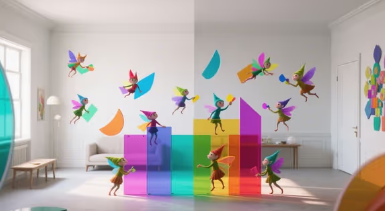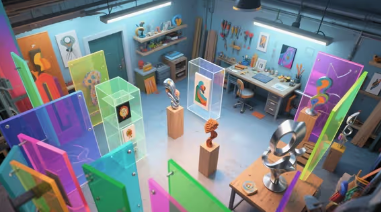High-Strength Clear Acrylic Sheet
One of Oleg's popular products is the clear acrylic sheet, and our strong production capacity ensure...



1: Breaking Flatness in Spatial Design: The Rise of Colorful Acrylic Sheets in Modern Interiors
1.1: Traditional Space Layouts Lack Dimensionality and Visual Impact
In conventional design paradigms, the dominance of monochromatic walls, basic furniture geometry, and uniform material use often leads to uninspired and visually flat spaces. Designers face increasing pressure to break from static layouts and deliver vibrant, emotionally engaging environments that reflect individual lifestyles and evolving functional needs.
1.2: Modern Consumers Demand More Expressive and Multi-Layered Spaces
With the evolution of interior design from functional arrangement to emotional storytelling, spatial layering and visual depth have become fundamental to user experience. Colorful Acrylic Sheets provide a breakthrough material for designers seeking to transcend superficial styling and craft immersive, multi-sensory environments.
1.3: Colorful Acrylic Emerges as a Material of Choice for Breaking Convention
Owing to its vivid chromatic spectrum, high light transmittance, and structural adaptability, Colorful Acrylic Sheet offers a compelling alternative to paint, laminate, or plain glass. It not only fills the aesthetic gap but also enhances functional aspects of spatial planning—making it a core material in next-generation interior design projects.

2: Painting with Light and Layers: How Colorful Acrylic Sheet Creates Spatial Dimension
2.1: Gradient Arrangements and Color Blocking Shape Visual Depth
Through strategic layering, gradient transitions, and contrast planning, Colorful Acrylic Sheet introduces dynamic rhythm and spatial hierarchy. Designers can simulate architectural depth through optical illusions—using tones from warm to cool, or dark to light, to expand perceived space and draw focus to key zones.
2.2: Light Refraction and Reflection Redefine Spatial Boundaries
One of the most unique aspects of this material is its interaction with light. When used as partitions, wall inserts, or light fixtures, the semi-transparent acrylic refracts ambient lighting, casting shifting hues and shadows that redefine how users perceive scale and boundary. The result is a space that constantly evolves with time of day and lighting conditions.
2.3: Light Behavior Enhances Atmosphere and Functional Comfort
The reflective properties of acrylic enable it to soften light sources while expanding brightness distribution. This contributes not only to aesthetic ambiance but also to occupant comfort, reducing the need for harsh artificial lighting. Colorful Acrylic Sheet thus becomes an active agent in creating warm, vibrant, and spatially intelligent environments.

3: Material Fusion and Freedom of Form: The Versatility of Colorful Acrylic in Interior Architecture
3.1: Mixed Media Compositions Enhance Spatial Storytelling
Combining acrylic with contrasting materials such as brushed metals, natural woods, and frosted glass allows for the construction of spaces rich in narrative and texture. The interplay between glossy color panels and raw finishes introduces tactile contrast, reinforcing thematic design directions—whether minimal, industrial, or organic.
3.2: High Adaptability Enables Custom Form Factors and Creative Installations
Colorful Acrylic Sheet is not only beautiful but also remarkably formable. It can be CNC cut, laser etched, heat bent, or panel-laminated to form everything from curving light tunnels to polygonal sculpture walls. Designers can respond swiftly to unconventional floorplans, niche dimensions, and creative briefs, expanding the language of interior architecture.
3.3: Flexibility Meets Functionality in Personalized and Modular Spaces
In an era defined by customization and modular living, Colorful Acrylic Sheet meets the challenge with ease. Whether used in retail display units, residential feature walls, or art-driven public installations, it allows for rapid prototyping, scalable fabrication, and a vibrant final presentation that reflects the user's personal identity or brand DNA.
